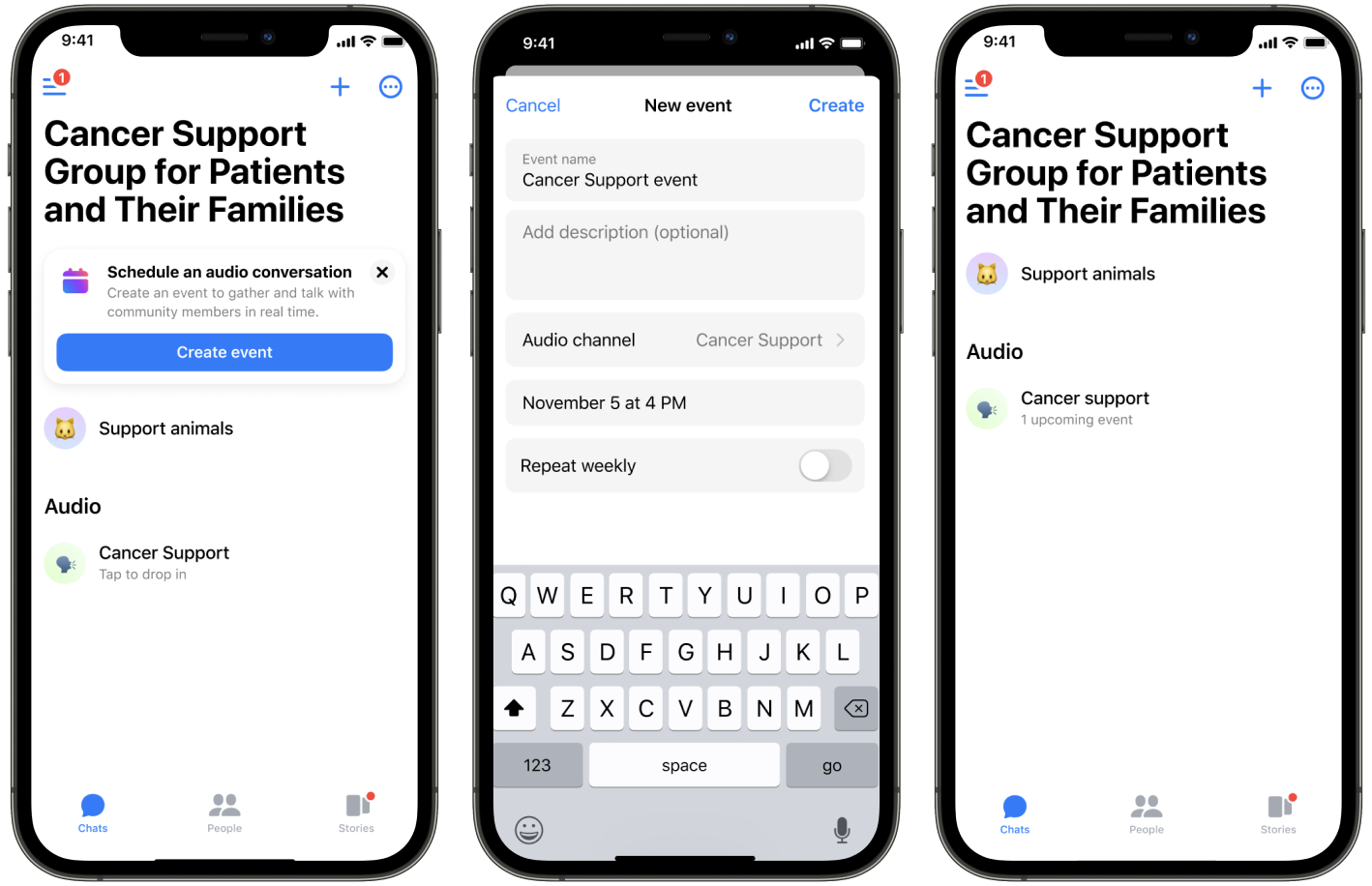

Overview
Facebook is the single largest groups and communities platform in the world. The problem is that from 2018-2022 usage on groups dropped significantly. Many other platforms have been competing in this space causing many users to perceive Facebook groups as becoming irrelevant.

Need for realtime communication.
Facebook groups felt limiting and irrelevant because posts were the primary communication method. While “rooms” existed, users didn’t know how to use these and the leadership team decided to phase out this feature in favor of group audio channels.
The Problems with audio channels?
Since rolling out audio channels the communities team realized they were getting low connection rates. My role was to increase the call connection time to ultimately make audio channels more valuable to users.
What others apps were doing in this space…
I researched as many competing and similar products as I could to understand what users were used to with other products in the space.
The products that most similarly fit the mental models that our users were expecting were Discord voice channels and Twitter spaces. The groups team originally created audio channels based directly on the discord voice channel model but there was one big difference.
The app navigation.
Most of the other apps put groups at the center of the ecosystem along with DM’s, but Facebook messenger hides groups in a menu that few users can find.
How to improve our connection rates?
I worked closely with another designer to brainstorm ideas for how to increase connection rates. Some of the ideas are below.
Initial ideas.
- Add more audio channel entrypoints.
- Rework the navigation.
- Create events for better scheduling and use of audio channels.
- Create audio channel preview state.
Concepts I explored
Since we had extra cycles in our UXR team at the time, It was an opportunity to try some ideas to get some user feedback and influence the next years roadmap for audio channels. The results were promising with >80% of users in the test suggesting that it would increase their chances of joining the audio channel.
Limitations and challenges.
Ultimately, there were lots of limitations and challenges to work around to accomplish our ultimate goal of increasing connections. The team I was on had non control over a lot of the root causes of the low connection rates, like the navigation. I worked with another designer to inventory the aspects of the app we did have control over which we concluded was none.
Areas my team could control:
The in-call experience on messenger.
Areas I specifically could control:
None.

How to move forward with so much friction?
Even though I didn’t officially have control over anything, I still had to make an impact regardless. To make this impact, I had to do it more through influence and negotiations with other teams instead of fully making changes myself.
While working with the other designer I teamed with, we decided that events was one of our best bets to get some movement and the most likely feature that could still hit goals while causing little friction on the team.
The reason for events
The hypothesis:
- This could be minimal effort because it could leveraging existing facebook group events infrastructure.
- Events would decrease bounce rate.
- More group members would join audio channels at the same time.
- Connection rates would increase.
How did we define success?
Since the root user problems with audio channels and connections overall were more related to an information architecture problem that was out of scope, we had to ensure the success criteria was defined by data we knew would be directly influenced by the updates we were creating.
- Connection times (how long had a call lasted) for audio channel events vs non-event based audio channels.
- Number of people joining an audio channel for an event needed to be higher than organic joins.
Results
Ultimately, I ended up leaving the team before I had a chance to see the full results of the launch, although after talking with some past colleagues I was able to learn a few valuable insights.
Event based calls times
>10x increase in connection times
Affected users
>30 million
Final designs
This is the final prototype I created to test the interactions and hand it off to the engineers.
